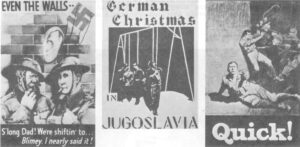November 20, 1972 London
 Remember Macrobiotics? The Frug? The Animals? Baba Ram Dass, Millionaire Michael Brodie, and Wavy Gravy? What about smoked bananas, can-you-dig-it, and fa-a-ar out? Do DMT, STP, and LBJ ring a bell? Okay, then, how about lovebeads, RYM-II, the Diggers, and the League for Spiritual Discovery?
Remember Macrobiotics? The Frug? The Animals? Baba Ram Dass, Millionaire Michael Brodie, and Wavy Gravy? What about smoked bananas, can-you-dig-it, and fa-a-ar out? Do DMT, STP, and LBJ ring a bell? Okay, then, how about lovebeads, RYM-II, the Diggers, and the League for Spiritual Discovery?
The real question, then: has the counterculture seen the light at the end of the social tunnel? Consider some of the evidence:
American campuses, according to Esquire, are quiet; the Weathermen have abandoned the scene; rock-and-roll has entered a phase of such overt decadence that it may never recover; many of those who so hopefully went back-to-the-land have since returned to the city streets; brown rice sales have plummeted; cheap booze is back; the Haight is long dead, and so is the Lower East Side; Bill Graham has sold his theaters; underground papers are in trouble everywhere; Abbie and Jerry are embarrassments; the West Coast has accepted Jesus.
Have the fruits of the counterculture rotted upon the vine even while America was a-greening? Have both Marx and Jesus prevailed over the Big Beat after all? Did the counterculture do its own thing and, having done so, had done with it? Stay tuned.
The answers to these questions is, and must be, an unequivocal “Nah.”
To answer otherwise would leave us in the role of Mr. Dylan’s Mr. Jones who knows that something’s happening, but doesn’t know what it is. That something is happening, or continues to happen, is obvious. The directions of American culture are more self-consciously opposed from within than they have ever been.
To assert that the counterculture is dying is to confuse change with death and culture with its artifacts. If the counterculture has failed to fulfill the prophecies of Reich, Revel, and Rubin, then it is their vision which is debunked and not the culture itself. We do not blame nature for its complex organization, but Thales for asserting a simplicity that wasn’t to be found. To say that the counterculture is sick because the Haight-Ashberry is dead would be as foolish as to conclude that the end of slavery signalled the demise of the United States.
The difficulty in identifying the counterculture, in judging its vigor, wins, and losses is particularly a problem in the United States.
No such problems are to be found in fascistic societies, such as in Spain and Portugal: whatever countercultures exist in such countries are readily identifiable when they are not completely underground. It is only in the relatively democratic nations that the nature of the counterculture is elusive. (We may wonder if there is, for instance, a Portuguese counterculture; but once we find it, its nature and direction are clear. The opposite problem exists in a democracy: we know there is a counterculture, but its direction is obscure.) The process which obscures the counterculture is one that resides at the heart of any democratic system: co-optation.
Cultures perish not by changing, but by not changing: atrophy is a culture-killer. The stability of a society, its capacity to endure, is largely proportional to its capacity to change. Art and science are catalytic instruments of social change. Under some social and economic systems art and science are therefore repressed in the interests of the established order. Thus, in totalitarian Greece and Spain, the arts are rigidly overseen by the government and its censors. The reason for this is obvious: because the mind directs the body, and not vice versa, revolution must begin with realization. To prevent the cause is to negate the effect.
Democracies, on the other hand, roll with the punches in so far as they are democratic. They do so by co-opting the opposition. If, then, our purpose is to understand the nature and direction of American counterculture, we must first understand the process of American co-optation. It is only with such an understanding that we can learn what the counterculture is and is not, what it was and may come to be.
Talking Co-optation Blues
Co-optation is that act whereby a larger group incorporates a smaller group within itself or, more rarely, when a smaller group incorporates a larger one.
Everybody talks about co-optation, but nobody does anything about it. That’s because co-optation is so much at the center of things that to fiddle with the process is rather like trying to adjust one’s heart-beat. Co-optation is the way the melting pot melts.
Specific examples of the process are readily at hand. It may, for instance, be said that the Democratic Party has recently co-opted the Populist young. The American Jesus-freaks have, to a significant extent, co-opted Christianity. And Madison Avenue has, to some extent, co-opted the counterculture.
There are, of course, degrees of co-optation and certainly the process can be reversed. It may happen that the Democrats will regurgitate populism. It seems likely that American Christianity will prove unable to digest the Jesus-freaks. And, what Madison Avenue can co-opt, it can also disinherit.
Co-optation is a bad word within the counterculture. Everyone knows it’s a bad thing, though few ever feel called upon to articulate exactly why. It’s just bad, and if you press for an explanation you’re likely to get a description of a process that sounds suspiciously like the theft of a soul. Which, in a way, is not wholly inaccurate. Co-optation often involves the “de-souling” of what is co-opted; all that sometimes remains is a skeleton and its clothes.
If one takes a dialectical approach to co-optation, the beauty of the process is revealed in elegant Hegelian proportions. One begins with an uptight, super-sublimating society (1950s’ America) as the thesis, discovers a counterculture emerging reactively as its antithesis (1960s), and concludes with a socially acceptable alternative culture as the synthesis of the two (1970s).
The process which has effected the synthesis is co-optation. The counterculture, through that process and mostly against its will, is made a part of the system it existed to destroy. The socially dynamic qualities of the counterculture, those aspects of it which threatened to unhinge the larger society, are neutered or stabilized by co-optation. The result is a society returning to a new equilibrium, its shape slightly modified by its digestion of the counterculture, and containing a pressure-release valve in the form of an alternative culture whose existence is not a threat.
This is not to say that the larger society will remain stable. A new antithesis will emerge; its effect will be determined by its size, vigor, and the degree to which it cannot be co-opted. Indeed, this new emergence is already under way.
The success of any co-optation is measured in terms of how much effect the entity being co-opted has upon the thing co-opting it. In a sense, a co-optation is successful to the degree that a thing does not become what it eats.
Co-optation, however, is never entirely successful. If it were, then it would not be what it is; it would instead be the process of annihilation.
The Vanguard
The vanguard of co-optation is Madison Avenue. The business of Madison Avenue is advertising, and the function of advertising is to attract favorable consumer attention to a particular product or service.
At one time, advertising sought that attention by emphasizing the utility and relative value of a product. As industrial processes became more efficient, as markets expanded, as consumers became more affluent, the diversity of products and services multiplied. The marketing ease of a product, and many services, were no longer determined by their utility and economy alone, but more and more often by their secondary characteristics: their packaging, or images.
Thus, identical detergents could be, and are, sold to different groups of consumers in accord with the consumers’ pathological weaknesses rather than their hygenic needs.
Snob appeal, sexuality, modernity, romance, and success are all secondary to the actual utility of a product in whose behalf they are frequently invoked. And yet they are the most common associations that advertisers intentionally attach to products they are paid to sell.
Advertisers, by the nature of their business, must be “with it;” they must, to succeed, understand who has what psychological needs when. For this reason, Madison Avenue is the best mirror of America.
In fulfilling their goals, advertisers have long understood the value of associating products with specific life-styles that directly derive from particular bodies of opinion.
The Cadillac, for instance.
Mad. Ave. saw to it that the Cadillac became completely identified with American success. Advertisements hawked the car sotto voce, proclaiming its owner’s stature and position in oblique, but uncompromising syllables. Before long, the car was utterly identified with the rich and the elect. What was actually being sold was not the Cadillac, per se, but success itself, a condition of which the Cadillac became viewed as an intrinsic part.
From this, it was only a short step to the subliminal notion that the Cadillac conferred success. Its transition from being an effect of a particular condition (wealth) to being viewed as a cause of that condition was completed in America’s subconscious.
One consequence of the connection was that large numbers of minority group members, particularly blacks, worked mightily to own Cadillacs, as if the vehicle were a talisman. It did not matter that the car might be unpaid for, or that paying for it would further impoverish an already poor owner. In 1950s America, success was measured less in terms of what one did than in terms of what one had. The possession par excellence was a Cadillac, and its possessor was, ipso facto, successful. (It is not for security reasons alone that the most expensive automobile and airplane in the United States are the property of the American president.)
The Cadillac’s ability to confer success upon its owner led to certain problems. Because advertisers sought to co-opt the rich by including them as a group within the universe of Cadillac owners, the ads had to reflect the life-style of the rich. It was, after all, that life-style which was being sold.
One of the problems which directly resulted from the Cadillac’s power to confer success was the emergence of a negative stereotype that hurt sales: the prestige-starved black welfare recipient barrel-assing through the ghetto in his flame-red Caddie. This did the car-maker no good at all. The image they sold was one of a stately Georgian mansion, a circular drive arcing through an expansive, manicured lawn, and two young whites in evening dress getting into a Cadillac for a night, not upon the town, but at the Stork Club.
Rent-a-Freak
Values change. What was admirable in the 1950s may be passe, or even despised, in the 1970s. And advertisers, of course, must be among the first to apprehend the change. (The ability or inability of individual ad agencies to detect such changes promptly is what makes an agency “hot” or “cold” at a particular time.)
One such change is the new belief by the young that the display of wealth, far from giving a Calvinistic inkling of an individual’s moral worth (as it once did), is evidence of probable moral corruption. In a time of insurgent populism, wealth is identified, rightly or wrongly, with odious special interests. Obvious displays of material success are therefore ill-advised.
As the 1950s wheezed to their end, an entirely different set of ideals emerged. Those ideals were popularized by the young with such enthusiasm that youth itself became idolized. The Kennedy Administration undoubtedly amplified this trend until, by 1965, middle-age had become a kind of social misdemeanor.
General prosperity and the unprecedented availability of credit from the late 1950s onward allowed many Americans the ultimate luxury of being able to deviate from their envy of material success. Youth’s premium soared as the guy with two houses, three cars, and an electric can-opener turned inward to see what was missing. What he was missing was the goodtimes on which the young seemed to have a patent.
Not only were the young among the most prolific consumers but, by the 1960s, they were being aped by their elders. Since advertisers need to convince potential customers that their product will confer the condition to which the customers aspire, it became necessary to co-opt the young and their culture. Middle-age, they suggested, could be negated with a hair-spray or shampoo.
But to co-opt something is to spread it, no matter how thinly. The trick is to spread only as much of that thing as is necessary to one’s purpose: if possible, it is ideal to omit the essence of that which is co-opted while preserving its style for one’s own uses. This is the way advertisers, who have no interest in rocking the social boat, prefer to work. It’s not unreasonable to say, therefore, that the ideological struggles of the 1960s were not fought to a conclusion upon the battlefields of People’s Parks, but are only now being resolved upon the advertising pages of Playboy, Cosmopolitan, and Time.
A perfect example of co-optation negating essence while preserving style is Mod Squad, a television show. In Mod Squad a handful of hip-looking, long-haired guys and dolls are committed to relevance, reform, Rock and bell-bottoms. Their speech is vintage youth culture, their style a marriage between Rolling Stone and the Police Gazette. They are, of course, narcs and informers, upholders of everything the counterculture despises; their business, in so far as that culture is concerned, is repression, and they exist as traitors. What has happened is that Hollywood (Madison Avenue’s surrogate ego) has grafted the style of the counterculture onto the culture’s own worst enemy. It has “de-souled” the counterculture and it is in this way that co-optation gets a bad name.
With the help of advertisers and television producers, the life-style of the counterculture is being assimilated as the pop style of youth-culture.*
* Note: the author realizes this sentence is an imposition on the reader. It is a hard sentence, and probably not cost-effective. Nevertheless, every serious essay should have at least one like it.
 Rock is used to sell both Levi’s and the police. A commercial touting the virtues of being a bobby in London unblushingly exploits the wah-wah pedal in delivering its message. Little Richard wails Tutti Frutti as a montage of Levi’s flickers over the screen in a second commercial. Crumb-inspired cartoons sell H.I.S. pants and Bushmill’s whiskey alike. Pseudo-psychedelic artwork hawks Minolta cameras, and long-haired male models pop up in advertisements for Wella Balsam hair conditioner and Hertz rent-a-cars. Words like “revolution,” “liberation,” and “free” (favorite nouns of the young) become tools for selling beauty guides, perfumes, deodorants, and shirts.
Rock is used to sell both Levi’s and the police. A commercial touting the virtues of being a bobby in London unblushingly exploits the wah-wah pedal in delivering its message. Little Richard wails Tutti Frutti as a montage of Levi’s flickers over the screen in a second commercial. Crumb-inspired cartoons sell H.I.S. pants and Bushmill’s whiskey alike. Pseudo-psychedelic artwork hawks Minolta cameras, and long-haired male models pop up in advertisements for Wella Balsam hair conditioner and Hertz rent-a-cars. Words like “revolution,” “liberation,” and “free” (favorite nouns of the young) become tools for selling beauty guides, perfumes, deodorants, and shirts.
It is, in many ways, a depressing process.
Olfactory Chauvinism
Consider, for instance, a young female office clerk who lives at home, unmarried, and possibly feeling brutalised by the monotony of her job and the over-bearing attentions of her parents. There are millions like her and, by virtue of their numbers, they constitute a primary target for advertisers.
A girl in this situation may very well harbor aspirations to be free from what is, for her, a socially desperate condition. She may identify those aspirations with the women’s liberation movement, or at least admire the proponents of that movement. She may disagree with everything Germaine Greer says; she may not understand women’s lib; she may even fear it — but, likely as not, she envies the life-style of the liberated Ms. Greer, and aspires to it. In any case, she doesn’t want to seem lame. And to prevent that dread possibility from coming to pass, she will go to great lengths to be, or seem, “with it.”
*Note: the author realizes this sentence is an imposition on the reader. It is a hard sentence, and probably not cost-effective. Nevertheless, every serious essay should have at least one like it.
Advertisers seeking to persuade such a woman to buy a particular product must convince her that their product will confer release from her unhappy condition. Or will, at least, associate her, through the agency of the product, with the movement whose advocates she admires.
In this way, women’s liberation — because it is fashionable — is marketed with the same enthusiasm usually reserved for deodorants. Because it is an effective selling device, it achieves a commodity status of its own. Or, more accurately, its style does.
 The Powers modeling school urges womankind to “Liberate Yourself” by paying to enroll in a course designed to turn out professional models. The pitch is that the (financial) rewards of modeling will enable a woman to free herself. The advertisement neglects to mention that the price of freedom may be the soul since models are, above all, professional sex objects. Nor does the advertisement mention that most women who enroll in such schools never become successful models, but must content themselves with having learned the techniques of modeling: make-up application, poise, “walking,” posture, smile tactics, and so forth — all of which may be desirable from a man’s point of view, but have no obvious relationship to women’s liberation. In fact, they seem antitheticaI to it in so far as they reinforce sexist stereotypes.
The Powers modeling school urges womankind to “Liberate Yourself” by paying to enroll in a course designed to turn out professional models. The pitch is that the (financial) rewards of modeling will enable a woman to free herself. The advertisement neglects to mention that the price of freedom may be the soul since models are, above all, professional sex objects. Nor does the advertisement mention that most women who enroll in such schools never become successful models, but must content themselves with having learned the techniques of modeling: make-up application, poise, “walking,” posture, smile tactics, and so forth — all of which may be desirable from a man’s point of view, but have no obvious relationship to women’s liberation. In fact, they seem antitheticaI to it in so far as they reinforce sexist stereotypes.
In another example of what appears to be bad faith, the makers of Ma Griffe, a popular perfume, attempt to reconcile women’s liberation, its fashionable associations, and a woman’s desire to be rich and well-married.
The substance of the ad reads:
“You’re liberated.
“You don’t believe in marriage.
“You tell him so.
“You wear Ma Griffe.
“He slips on the ring.
“(It’s five carats.)”
The “you” in this ad is the female reader. She aspires to “liberation” and Ma Griffe pronounces her liberated. Evidence of her liberation is the fact that she doesn’t “believe in marriage.” Proof of her liberation lies in the fact that she “tell(s) him so.”
“Him” is someone who obviously does “believe in marriage.”
We know this because he slips on the ring. The only other information we have about him is that he’s rich (“It’s five carats.”) (!) and, therefore, desirable.
Ordinarily, this would seem rather boorish behaviour. One can imagine the conversation:
“I don’t believe in marriage,” she whispered huskily.
“Of course you don’t, sweetlips, but try this baby on for size — it’s five, count ‘em, five carats!”
“In that case…” she ellipsed.
The advertisement is composed of two syllogisms with the fifth and sixth terms presented in a misleading order. The terms, in their correct order, are:
- You’re liberated.
- You don’t believe in marriage.
- You tell him so.
- You wear Ma Griffe.
- He owns a five-carat ring.
- He slips it on.
The syllogisms are:
If A, then B. | If D, then E. |
If B, then C. | If E, then F. |
If A, then C. | If D, then F. |
Obviously, the first syllogism has nothing to do with the second except to imply that, given A, B, and C, then F will follow if and only if both D & E.
The message of the ad seems to be: “Okay, girls, insist on all this claptrap about women’s lib. But, if you do, you’re going to need Ma Griffe, and need it bad.”
The advertisement suggests that women may have their ideological cake and eat it too. Women’s lib is used as an attention-getting device in the first syllogism in recognition that the movement is both controversial and modish. The ad attempts to bridge the horns of a dilemma constructed of opposing ideas, marriage and liberation. The bridge is built with the cement of hypocrisy.
(It may be recalled that one of the women’s movement’s first actions was to plaster appropriate advertisements with the message, “This ad exploits women.” Advertisers apparently got the message and reacted by exploiting the women’s movement as well. (They’re hard-nosed, no doubt about it.)
A by-product of ads like these is that they reinforce the acceptability of opinions with which they associate themselves. The consequence is that women’s liberation becomes almost as acceptable as Ma Griffe. Or a modeling school. Or any other commodity in whose name that movement is invoked . (You’re married. You don’t believe in bigamy. You tell him so. You wear Brand X. He slips on the ring. (It’s five carats.))
Levi’s Loves You (So Does H.I.S.)
It is this process of associating politically relevant ideas or life-styles with consumer products that results, not only in sales increases, but in wider acceptance of those same ideas or styles. Indeed, if a product becomes completely identified with such an idea or life-style, it may be said to have a stake in its survival and acceptance. (It is not unreasonable to say that Cadillac has a stake in “success;” success is, after all, Cadilac’s most important product, just as General Electric likes to believe that progress is theirs).
 Levi’s, for instance, have become nearly totally identified with the hip, free-swinging style of the casual young. In a widely-shown commercial, Little Richard sings “Tutti Frutti” while numbers of well-shaped, Levi’s-draped abdomens saunter in and out of camera view. Sewn to the Levi’s that the camera sees are a variety of symbols associated with the counterculture — the two-fingered “peace sign” for example. In one brief (but important), nearly subliminal flash the viewer sees a Levi’s-clad youth being frisked by a policeman; in the kid’s back pocket, beneath the pants’ label, is a packet of cigarette papers. The implication one seems forced to draw is that the Levi’s firm is behind you even when The Man hassles you about your dope. The sexuality (what some might nasally define as the “permissiveness”) of the counterculture is integral to the commercial; the camera’s preoccupation with buttocks verges pleasantly on fetishism.
Levi’s, for instance, have become nearly totally identified with the hip, free-swinging style of the casual young. In a widely-shown commercial, Little Richard sings “Tutti Frutti” while numbers of well-shaped, Levi’s-draped abdomens saunter in and out of camera view. Sewn to the Levi’s that the camera sees are a variety of symbols associated with the counterculture — the two-fingered “peace sign” for example. In one brief (but important), nearly subliminal flash the viewer sees a Levi’s-clad youth being frisked by a policeman; in the kid’s back pocket, beneath the pants’ label, is a packet of cigarette papers. The implication one seems forced to draw is that the Levi’s firm is behind you even when The Man hassles you about your dope. The sexuality (what some might nasally define as the “permissiveness”) of the counterculture is integral to the commercial; the camera’s preoccupation with buttocks verges pleasantly on fetishism.
This is co-optation of the nicest kind.
Our sympathy goes out to the nice Levi’s kid being frisked by the cop. The sexuality is appropriately seductive (all of the kids are well-proportioned). The ad’s emphasis on the free and casual life is true to the values of the counterculture. At commercial’s end all of the youths, all long-haired, wander off into arboraceous pastures. Woodstock lives.
The commercial is as much an advertisement for the lifestyle of the counterculture as it is for a particular brand of trousers. One gets the impression that Levi’s would like to see the war over, too, and is sympathetic to the heads in their never-ending conflict with the feds.
Trousers, in fact, are at the center of the ideological struggle being waged on Madison Avenue. It is as if the only people who wear pants are freaks because so many of the trouser-ads seem to be directed at them.
“The great put-on from the planned panthood people,” says Fox Trot’s Knitz. “We’re not putting you on and you’ll know it when you put on our great new Knitz … styled for today.”
H.I.S. Corduroy Jeans makes the point more bluntly.
In the H.I.S. ad we encounter a cartoon which is very much in the Crumb style (so much so, in fact, that one is tempted to believe that the creator of Mr. Natural drew it.)
The H.I.S. ad reads “Sensuous pants for a truly touching experience. They’re made of lasciviously lush corduroy and they come in twelve titillating colors. These h.i.s. pants appeal to prurient interests.” So, in a self-mocking way, does the cartoon.
It depicts a freaked-out aging adolescent with exploding hair smoking pot while flies circle his head and nubile, buxom young girls undergo orgasmic shudders as they charge his reclining body.
It is a clearly sexist, possibly racist, certainly chauvinistic ad and would seem so to any hippy with a reasonable education and a bad sense of humor. What makes the advertisement more amusing than offensive is the style of cartoonist Crumb. Because Crumb is a vital part of the counterculture, his criticisms and excesses are accepted as either eccentricities or self-mockery. Within that context, few youths would mind even the atrocious double-entendres of the ad’s prose.
What view does the ad actually project of the freak?
We know he’s indolent because he’s lying around smoking dope (we know it’s dope because his stash lies open on the ground beside a packet of Zig Zag papers). His pose is vain, a caricature of a model. He wears corny T-shirts that don’t fit, and apparently fails to bathe (flies). He accepts the women’s attentions with a look of conceit. He’s obviously happy in his promiscuity. He is, in short, an unwashed jerk.
The point about this ad is that it illustrates a second form of co-optation — that in which a smaller group co-opts part of a larger one.
Where Levi’s pretends to adopt the counterculture, corporate America, represented by H.I.S., pretends to have been adopted by the counterculture.
One firm uses flattery and the other criticism to accomplish the same end. Each ad is successful because it pretends to an insider’s perspective. The camera-work in the Levi’s ad is subjective and, in its shot of the frisking, establishes the corporation’s empathy. H.I.S. achieves the same perspective with its Crumby criticism. The H.I.S. ad is riskier in that it would fail miserably if another style — one without Crumb’s associated stature — were used. Because it takes that risk it may be even more convincing and, therefore, successful.
How Now, Right Guard?
“My world is evergreens and old blue jeans. Fresh, clean air. And Dep for my hair.”
“Right Guard’s newest anti-perspirant — Natural Scent.” (Emphasis theirs.) “A light clean scent. Not perfumey or chemical. A scent that comes from real, natural ingredients. Not a lot of artificial ones. And it’s Right Guard. You know it has the best wetness fighter in any anti-perspirant spray.”
In both these ads, the ecology and natural-environment enthusiasts are solicited by corporate allusion seeking to identify their product with the movement. Reading Right Guard’s ad one is ready to believe that, after years of underarm gassing, the company has managed to develop a scent which will return the smell of sweat to the consumer. For a price, of course. (First we pay to get rid of it, and then we pay to get it back; it is, in a sense, free enterprise’s way of recycling attitudes.)
Indeed, naturalness (with its undertones of ecological awareness, health foods, spontaneity, and unspoiled nature — all youth-culture values) is elsewhere found essential to being attractive.
“Vogue says: to be pretty, you must be natural. Angel Face is for girls who agree — girls like Sian Houston.” Angel Face then tells us that “natural,” in this case, requires the application of Angel Face Make-up Mousse (Pretty Creamy shade) topped off with a swath of Pretty Pansy Cream Blusher, some Wineshine lipstick, and a few hits of Silver Pearl Eye Shadow modified with a touch of Blue Haze. The result, predictably, is the same natural look one is likely to encounter at Madame Tussaud’s.
What most of these ads have in common, besides their identification with youth values, is their inherent bad faith: they invoke in their own behalf the very values which threaten their profits. (Even the trousers’ advertisements. Both Levi’s and H.I.S. are challenged by youth’s anti-fashion bias; their response is to exploit that bias in the creation of a brand-name, pseudo-proletarian couture acceptable to the young. In Levi’s case in particular, the firm has not so much accepted the values of the young as it has trademarked them.)
Obviously if one wants a “natural scent” one ought to avoid “anti-perspirant sprays.” Similarly, if to be pretty is to be “natural,” then one would best achieve this end by wearing no make-up. If to be liberated is to be unmarried, then clearly one should flee Ma Griffe.
Each of these ads indirectly attacks the values of the counterculture while seeming to endorse them. The attack takes a negative or affirmative approach depending upon the product.
In the case of Ma Griffe and Angel Face, the attack is negative in that it equates seeming with being, appearance with reality. The hypocrisy of seeming natural without being so, of seeming liberated (“You tell him so”) without being so, is applauded by the advertisements. The result is a phoney affirmation of ideals that are not, in fact, held. Such ads subvert the counterculture rather than spreading it.
In the case of Levi’s and H.I.S. the attack is affirmative and indirect. The values of the counterculture are confirmed by these advertisements, but are subverted nevertheless. What subverts those values are the ads’ insistent identification of the values with particular products. In establishing that identification, the advertisements necessarily reduce the values to commercial lures. If the products fail to confer the social benefits with which they associate themselves, the consumer’s disappointment with the product is likely to be transferred to the movement with which it is associated.
The Cadillac owner who discovers his vehicle does not, in fact, confer success has every right to feel cheated. In the same way, the lonely youth who dons a pair of Levi’s and remains lonely has every right to be disappointed with his pants. The un-raped H.I.S.-kid is likewise a victim.
All of these products pretend to confer on their owners specific benefits that derive from holding particular values. What is intentionally confused is cause and effect: one does not become spontaneous by wearing Levi’s. One may wear Levi’s to accomodate a sense of spontaneity.
Style proceeds from essence, and not vice versa. The result of confusing cause and effect, style and essence, is to diminish the credibility and dilute the nature of the counterculture.
To identify, as Madison Avenue does, the outward manifestations of a social movement with that movement’s interior design is to throw out the baby while preserving the bath water. Levi’s, we are told, stand for something. They are not simply pants. When these trousers are put on, so, the advertisements imply, is a life-style replete with a body of opinion and ideals — the thinking of which can conveniently be left to someone else.
Just as the Cadillac owner did not need to be wealthy to appear successful, the owner of a pair of Levi’s need not be informed to seem hip. His attitudes are arrived at via his wallet and not his experience. They are built into the pants. They are conferred.
 Another result of these advertisements (and many others like them) is that, by pre-packaging and homogenizing style, they gloss over diversity and inhibit debate. Conflicting opinions are accomodated to each other through the agency of style without ever being resolved. Jim Beam does not recognize any generation gap, as they put it, between Dennis Hopper and John Huston; they are both “young mavericks” (except that Huston is older).
Another result of these advertisements (and many others like them) is that, by pre-packaging and homogenizing style, they gloss over diversity and inhibit debate. Conflicting opinions are accomodated to each other through the agency of style without ever being resolved. Jim Beam does not recognize any generation gap, as they put it, between Dennis Hopper and John Huston; they are both “young mavericks” (except that Huston is older).
With the help of Madison Avenue, society comes to accept the symbols of particular attitudes without ever accepting the attitudes themselves — only seeming to do so.
Long hair is an obvious example of this kind of co-optation. When it first manifested itself, long hair was a declaration of protest and resistance to a system characterized by a conformity whose symbolic sine qua non was the crew-cut.
Long hair became a kind of rallying point. Since the resistance it represented could not conveniently be smashed or accomodated, the society reacted by co-opting the symbol itself. In accepting long hair, society appeared to have reformed when, in fact, it had only modified its uniform.
Chimera
The business of Madison Avenue is illusion; its purpose is not to shape opinion, but to exploit it. We would expect an instrument so persuasive as advertising to be a dynamic force within the society, continually modifying it. In fact, that doesn’t seem to be so.
Art and science are catalysts which ignite social change. To a significant extent, most Americans’ contact with these phenomena come about within an advertising context. Our streets are, to a very real degree, art galleries conditioning every level of American consciousness all the time. Television has converted the living room into both theater and museum. Because art stimulates social change, because advertising has thrust art upon us and made it a part of everyone’s daily life, we would expect to find Americans conditioned toward change. “New” and “revolutionary” are, after all, the words most often applied to both toothpastes and detergents. “Newness” and “radical change” may be said to be American values. But advertising art is, by its nature, not art in the true sense. It is not timeless and universal, as art must be, but momentary and particular. It advertises Dial Soap and not cleanliness per se.
(Indeed, the parallels are even deeper. American corporations today commission advertisements and commercials in much the same way, and often for the same reasons, that the Medicis commissioned artists. The products of the Commission, the “art,” gathered prestige to the owner in whose behalf it was created, thereby “selling him” to the public, and supposedly defending the values for which he stood. Of course, many cruel portraits were admired by dumb aristocrats, just as many contemporary advertisements mock the very products they advertise.)
Similarly, the science which advertisements bring to us is only pseudo-science: it does not inform us of things as they are, but only appears to do so. The Alka-Seltzer or Contac effigy who gobbles in silhouette the soothing bubbles of panacea is not a representation of healing or the human anatomy, but a mockery of them.
Because of this characteristic of advertising’s pseudo-art and pseudo-science, Americans are conditioned not so much toward change, as we might expect, but toward the illusion of change. They vote for an incumbent in the hopes that he will create a new society without modifying the old one.
Obsolescence
If American counterculture is today not so easily identifiable as it was a few years ago it is not because that counterculture has faded or achieved its ends. It has, instead, become obscured because we tend to identify it by symbols which are no longer its own or which are obsolete.
Rock-and-roll, for instance, is no more a necessary part of the counterculture than the bow-and-arrow is a necessary part of war. When the bow-and-arrow fell into disuse, war did not; it merely assumed a different form.
The danger of confusing the counterculture with its own symbols or artifacts is that when the latter go into a decline it is assumed that the former has as well. Thus, the decadence of rock-and-roll is viewed as a deterioration of the counterculture itself.
A second problem in the same kind of association is that individual and groups identified with (perhaps obsolete) symbols or manifestations are simultaneously equated with the counterculture. Committing this error one looks to, for instance, Mick Jagger to gauge the directions that the subculture is likely to take. But Jagger, of course, is no more a spokesman or representative of the counterculture than Dr. Spock is of the Establishment.
Both men, if one disregards their views, fit stereotypes to which, in light of their views, they clearly don’t belong.
Such errors inevitably lead to a pessimistic analysis because symbols (and representatives) are the first aspects of any counterculture to be co-opted. In their co-optation they are robbed of both meaning and relevance. The result is a judgement of a social movement based upon its most denatured aspects. Through this kind of error the future is confused with the past, and vice versa.
It seems likely, therefore, that the counterculture can be best measured by those aspects of it that have not been assimilated and the degree to which they nevertheless flourish.
To do this one has to disregard the pronouncements of Rolling Stone, the proliferation of Levi’s, the significance of “Natural Scent,” and the relative health of, for instance, the Rock industry.
To find the counterculture one must instead go to its roots, and to the roots of American society. And, like all roots, they will be underground and not immediately apparent.
Received in New York on November 22, 1972.
©1972 Jim Hougan
Jim Hougan is an Alicia Patterson Foundation award winner on leave from The Capital Times (Madison, Wis.). This article may be published with credit to Mr. Hougan, The Capital Times, and the Alicia Patterson Foundation.








